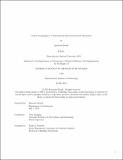Critical Cartographies of Transnational Infrastructure-led Urbanization
Author(s)
Shoaib, Jehanzeb
DownloadThesis PDF (199.9Mb)
Advisor
Aksamija, Azra
Terms of use
Metadata
Show full item recordAbstract
This thesis is a manifesto that traverses the binaries of land and sea to mediate between the preconceived notions of boundary and territoriality. The contextual landscape of this mediation is within the littoral territory of Gwadar, in the southern coastal region of Baluchistan, in Pakistan. This port city acts as a gateway to the China-Pakistan Economic Corridor, which, because of its deepsea edge, has been subjected to China’s infrastructure-led urbanization. As a result, the local fishing community – numbering close to 36,000 - and its eco-system have been impacted and displaced, triggering large-scale protests that have been censored by the state-run media. This thesis is thus a manifesto that gives voice to the littoral landscape and the indigenous community, inviting participatory forms of dialogue on the role of design and its agency. At issue here is the conception of Gwadar as an edge on which a highway has been built, restricting the fishing community’s access to the sea. For this community, known as nomads of the sea, Gwadar is not an edge but a gateway to the sea – just as its name implies: an amalgamation of two Balochi words, Guad means wind and dar means gateway, aggregating to mean the gateway of winds. By providing evidence of their territorial claims through critical cartographic methods of ethnography, photography, and mapping, this thesis frames the spatial-temporal thresholds of the littoral which, like the winds, morph with time. The manifesto argues, to view the coastal landscapes as thresholds, rather than mere coastlines. Moreover, it proposes re-learning from the indigenous collectives of rural commons towards creating a subsistent coastal community by circulating a zine pamphlet that legitimizes the claims of the indigenous inhabitants of the littoral landscapes, both human and non-human.
Date issued
2023-06Department
Massachusetts Institute of Technology. Department of ArchitecturePublisher
Massachusetts Institute of Technology